The Rise of RevOps to the C-Suite
Published:

A market research study on the strategic evolution of Revenue Operations in 2025.
Why we conducted this study
Revenue Operations is undergoing a rapid transformation. Once defined by sales support and reporting, RevOps is now taking on a much larger role in how organizations plan, forecast, and manage business performance.
Two major forces are accelerating this evolution:
AI adoption is giving companies the ability to unify and activate data across Sales, Marketing, and Customer Success. Leaders are using it to improve forecasting accuracy, streamline decision-making, and uncover new growth opportunities.
Macroeconomic uncertainty has increased demand for precision. Over the past five years, leaders have navigated market volatility, interest rate shifts, supply chain disruption, layoffs, and geopolitical instability. RevOps is becoming a critical function in helping companies respond with speed and discipline.
Salesloft commissioned Wakefield Research to survey 400 U.S. RevOps and executive decision-makers across four industries: manufacturing, telecommunications, financial services, and technology. Respondents included RevOps leaders, CROs, VPs of Sales, and CEOs.
Executive summary
RevOps is becoming an essential part of business strategy, with its influence and strategic role continuing to take shape.
Current state:
73% of companies now have a C-suite role dedicated directly to RevOps
98% say the function has grown in scope over the past year
94% say RevOps is receiving more attention from executive leadership
What's driving growth:
AI is delivering measurable ROI for 97% of teams, particularly in forecasting and analytics
Economic pressure has made RevOps more valuable, with 48% of respondents saying recent economic shifts have increased the function's organizational value
What's still missing:
89% say RevOps lacks clearly defined strategic goals
- 87% plan increased investment, but teams want clarity (64%), better tools (62%), and decision-maker access (62%) over budget
Key findings
1. RevOps has reached the C-Suite
73% of companies now have a C-suite role dedicated directly to RevOps, with teams working most closely with COOs (26%), CEOs (25%), and CFOs (24%). This elevation reflects a fundamental shift from support function to business-critical role.
The companies seeing strongest results embed RevOps in forecasting, planning, and cross-functional strategy. These organizations report better alignment between Sales, Marketing, and Customer Success, plus faster strategic pivots when market conditions change.
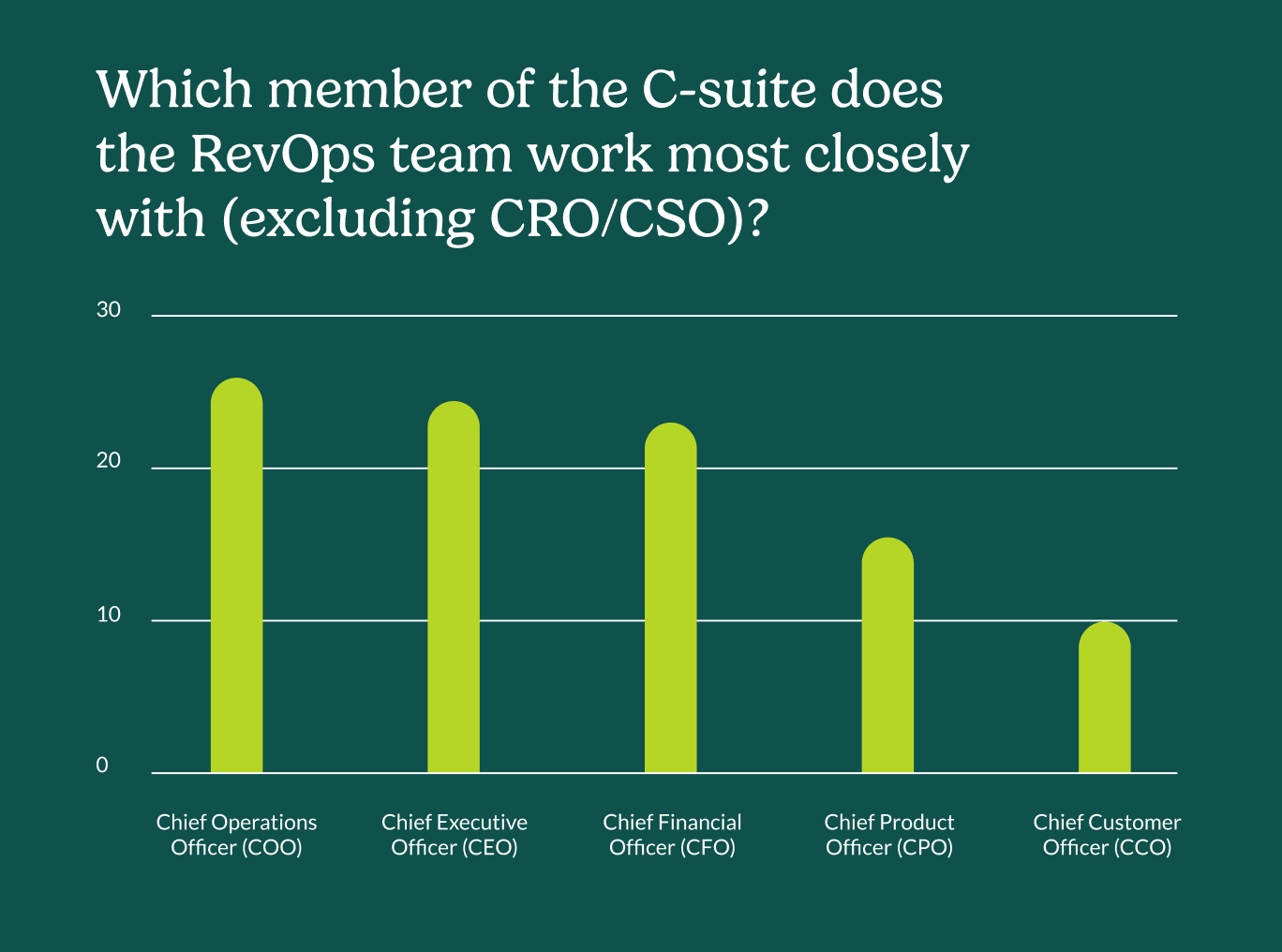

2. AI adoption is accelerating impact
RevOps teams are achieving practical AI implementation faster than most business functions. 97% report measurable ROI, with strongest gains in forecasting accuracy, predictive analytics, and operational efficiency.
The technology is enabling cross-functional data connectivity that wasn't possible before. Companies can now track customer lifecycle metrics across Sales, Marketing, and Customer Success in real-time, leading to more precise revenue predictions and faster identification of growth opportunities.
However, implementation remains fragmented. Teams using AI as part of integrated data strategies report significantly higher impact than those deploying point solutions.
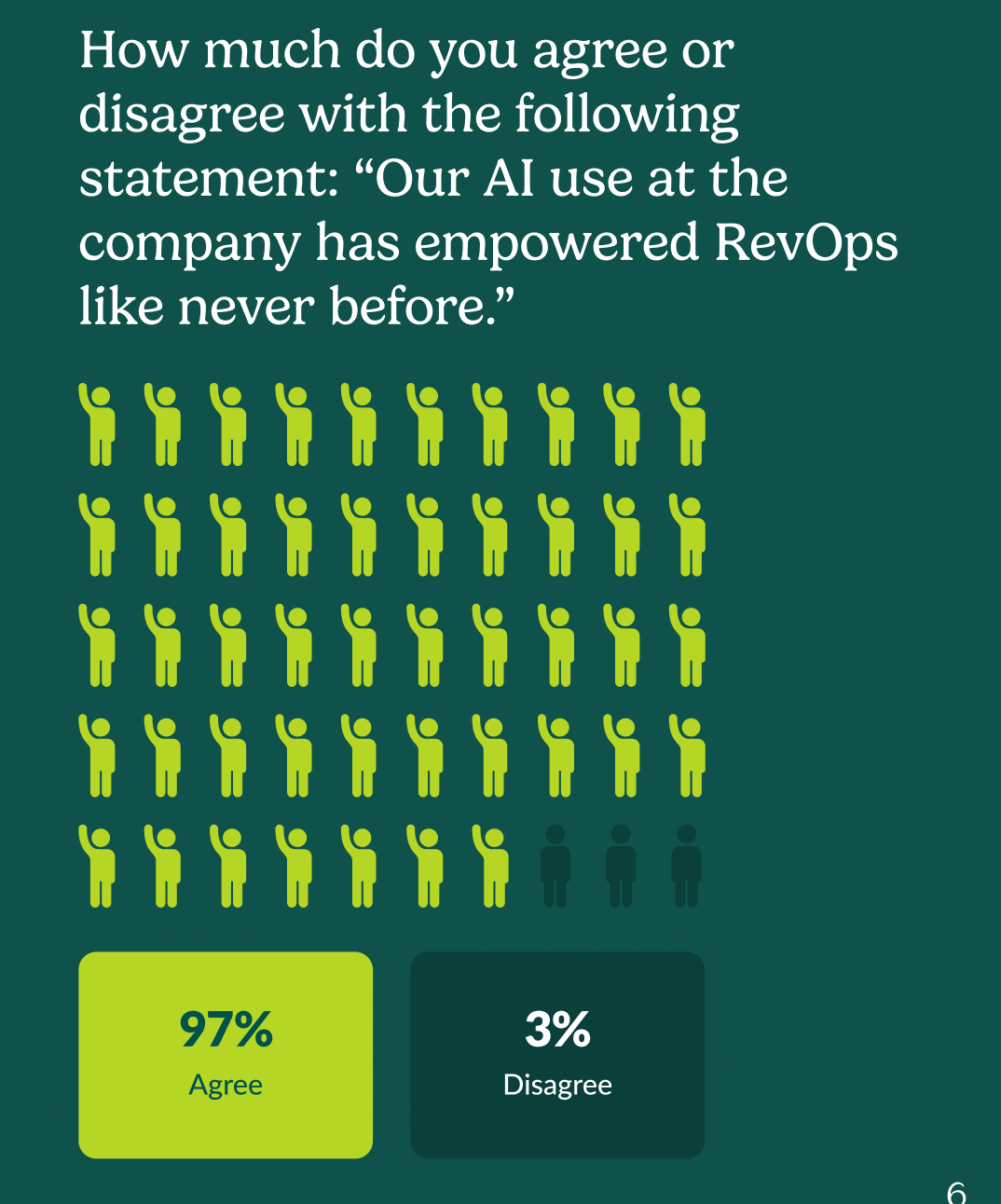

3. Economic volatility is increasing strategic value
Macroeconomic uncertainty has strengthened RevOps' position rather than weakening it. 48% say recent economic shifts have increased the function's organizational value.
During periods when other functions faced budget cuts and hiring freezes, RevOps continued expanding. Companies are relying on RevOps teams to provide data-driven guidance for navigating volatile markets, identifying what's working, and determining where to pivot resources.
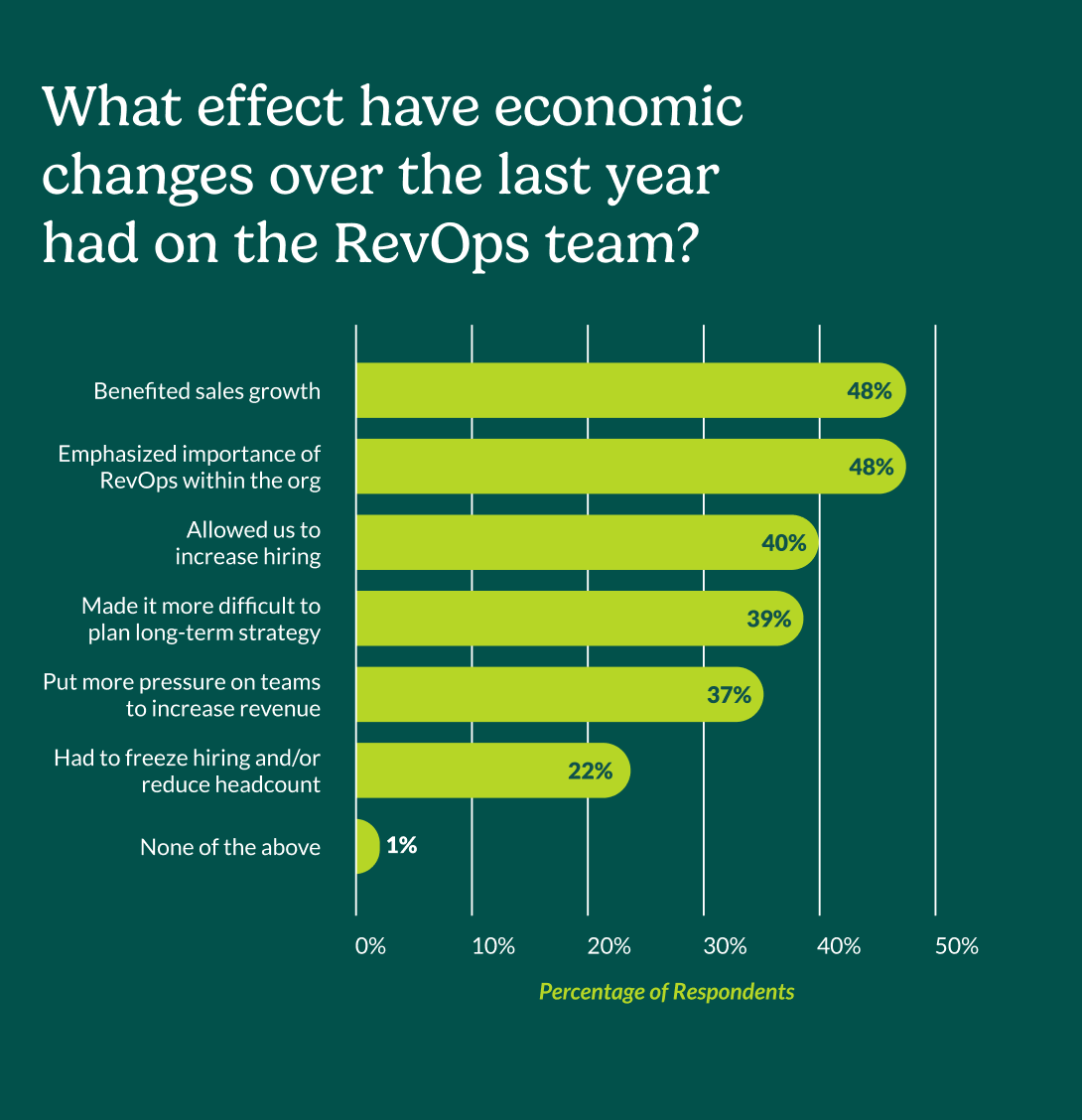
4. Role definition creates strategic disconnect
Despite C-suite access, RevOps faces a fundamental clarity problem. 89% say the function lacks clearly defined strategic goals, creating confusion about primary responsibilities.
This ambiguity is limiting impact. Half of respondents view RevOps as strategic, while the other half see it as reactive support. 79% still categorize RevOps as sales-adjacent, even though the function now influences technology decisions, cross-functional processes, and revenue strategy.
The result: RevOps teams are present in strategic conversations but rarely leading them.
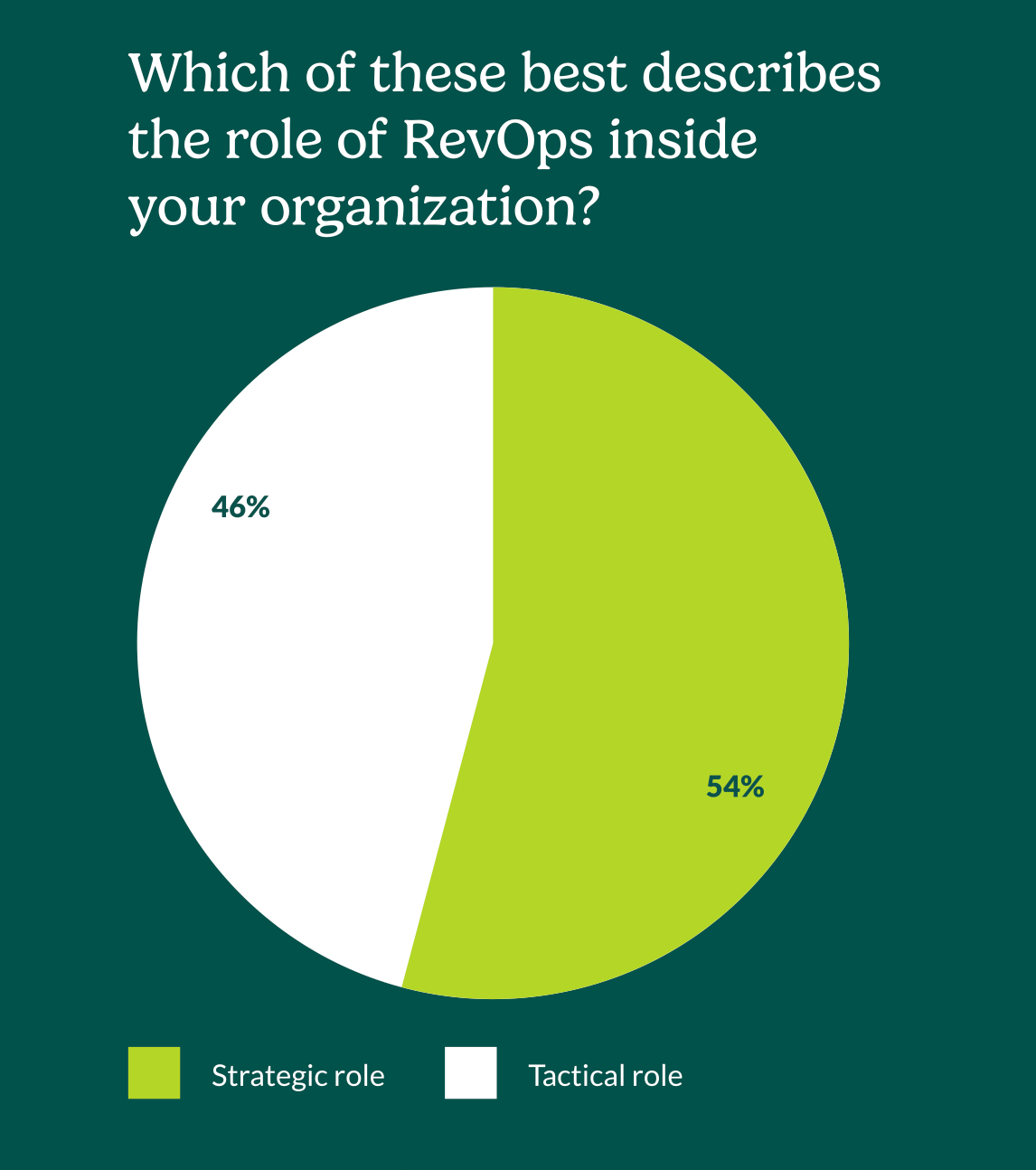
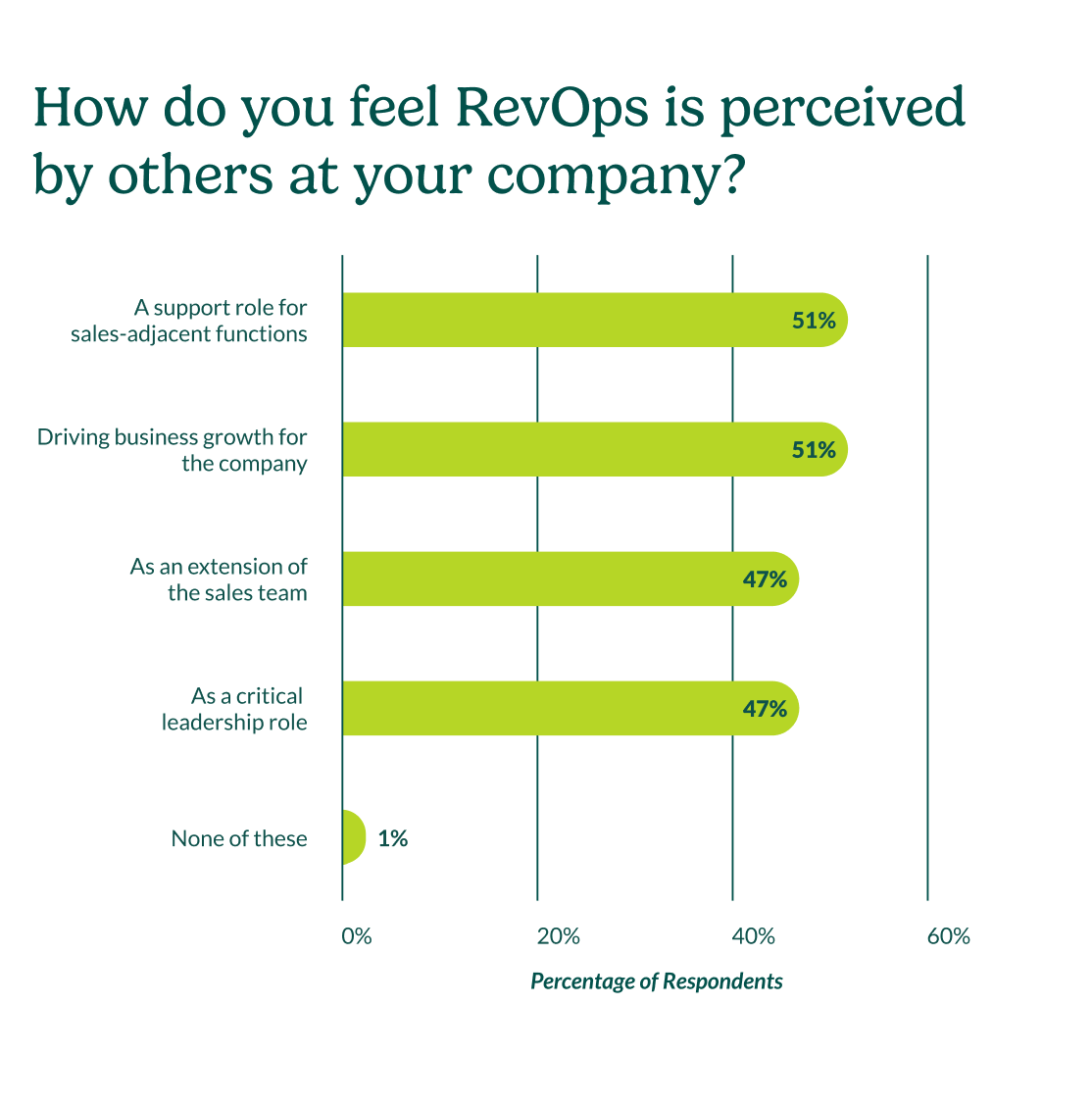
5. Investment priorities reveal execution gaps
While 87% plan increased RevOps investment, teams aren't just asking for bigger budgets. Their top three priorities are clearer expectations (64%), better technology (62%), and more decision-maker access (62%).
This gap between investment and direction is creating missed opportunities. RevOps teams have resources but lack the mandate to lead strategic initiatives.
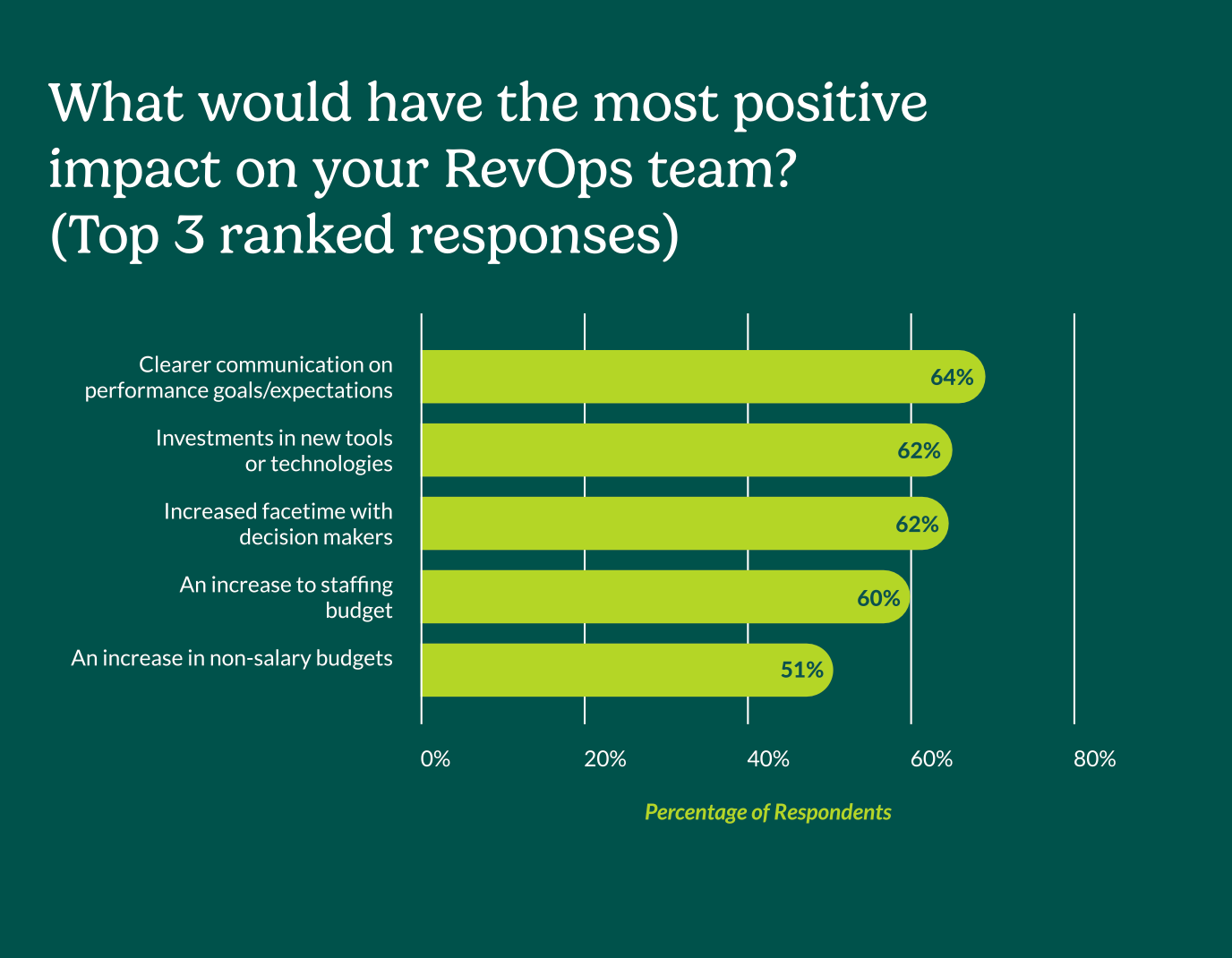
Strategic implications
RevOps is at a critical inflection point. The function has achieved organizational recognition and budget allocation but needs clearer strategic definition to realize full potential.
Companies successfully leveraging RevOps strategically share four characteristics:
Defined ownership: Clear accountability for specific outcomes like forecasting accuracy, technology strategy, and cross-functional process design.
Proactive leadership: RevOps teams surface insights and recommendations rather than waiting for requests.
Integrated technology: AI and data tools function as shared infrastructure rather than departmental point solutions.
Executive access: Direct involvement in strategic planning processes, not just reporting meetings.
Recommendations
For executives:
Define what RevOps owns versus supports — create accountability for strategic outcomes
Include RevOps in planning processes, not just status meetings
Fund integrated technology strategies rather than allowing siloed tool adoption
For RevOps leaders:
Lead with insights and recommendations, not reports
Focus on business impact metrics that matter to executives: revenue predictability, growth efficiency, strategic responsiveness
Build cross-functional relationships to expand influence beyond sales alignment
For organizations:
Position RevOps as a strategic center of gravity for go-to-market operations
Provide tools, access, and mandate needed for strategic leadership
Measure success through strategic contribution, not just operational efficiency
Looking for where to start? Our RevOps Leadership Handbook breaks down how Salesloft’s own RevOps team drives alignment, forecasting, and smart tech decisions across the business.





























